38 reading and understanding food labels
PDF Healthy Eating Workshop Reading and understanding food labels Reading and understanding food labels Workshop outline (60 minutes) 1. Welcome (5 minutes) 2. Whole versus processed foods ( 10 minutes) 3. Packaged Foods - how do you choose? (30 minutes) 4. Let's Practice (10 minutes) 5. Closing (5 minutes) Suggested handout: How to Read a Nutrition Facts label (see Page 2 of the above linked handout) Food labels - NHS Most pre-packed foods have a nutrition label on the back or side of the packaging. These labels include information on energy in kilojoules (kJ) and kilocalories (kcal), usually referred to as calories. They also include information on fat, saturates (saturated fat), carbohydrate, sugars, protein and salt.
Understanding food labels - Canada.ca Understanding food labels. Food labels, nutrition facts tables, serving size, ingredients, % daily value, nutrition claims. Services and information. Nutrition facts tables. How to use, what is in them, foods that don't have a nutrition facts table. Serving size.
Reading and understanding food labels
Yoo-Reading Nutritional Labels - YouTube Joyce Yoo, MD (Internal Medicine Physician) talks about the importance of reading food labels and understanding what you are eating safefood | How to read food labels Some labels use colour coding to show at a glance if a food is high, medium or low in fat, saturated fat, sugar and salt. Low (green) - the best choice. Medium (amber) - okay most of the time. High (red) - only choose occasionally. If the label isn't colour coded, use our label decoder as a guide. Low (green) How To Read Food Labels: Understanding the Basics - Instacart The nutrition facts table is usually found on the rear or the side of the label. This is perhaps the most useful part of a food label, providing a detailed breakdown of the product's nutritional content, including calories, protein, carbohydrates, fat, and more. 1. Beware of misleading claims.
Reading and understanding food labels. Learning To Read Labels :: Diabetes Education Online On a nutrition food label, subtract the fiber from the total carbohydrate amount. When you read food labels, the grams of sugar are already included in the total carbohydrate amount, so you do not need to count this sugar amount separately. The grams of sugar listed include both natural sugars, from fruit or milk, and added sugars. PDF How to Read the Food Label - Risk Services Look for low- sodium foods with less than 140 mg per serving. Track the total amount you eat. Fiber. Aim for 25 to 38 grams of fiber per day. Sugars: Limit added sugars. Some vitamins and minerals may be listed with DV in one serving. Percent Daily Values (DV) tell you how much you should be eating based on a 2,000 or 2,500 calorie diet. Why it is important to read and understand food labels The food label will provide information on what you are putting into your body by reading the ingredients and how much you are eating by reading the nutrition facts. For most people with diabetes it is ideal to maintain a healthy weight. In order to do this, we must understand what nutrients we are putting in our meals. Reading and understanding food labels - Human Kinetics Reading and understanding food labels This is an excerpt from Fitness and Wellness in Canada With Web Study Guide-Loose-Leaf Edition by Sarah J. Woodruff Atkinson,Carol K. Armbruster,Ellen M. Evans & Catherine M. Sherwood-Laughlin. Under the Food and Drugs Act, Health Canada requires labeling for all packaged foods.
The importance of reading and understanding food labels The Basics of the Food Label Labels are designed so that consumers are provided with useful information about the product and how this would fit into their daily diets. This is how one could read these labels 1. Look at the list of ingredients The list provides an overview of the product's "recipe" or constituents. Food label reading: Read before you eat - PMC In our study, 57.7% consumers "don't understand" the food labels, whereas 39.7% "partially understand" the food labels information. Nutrition labels typically contain information on calories, serving size, and amounts and/or daily values of several macronutrients, vitamins, and minerals (e.g., fats, carbohydrate, and calcium). How to read food labels: MedlinePlus Medical Encyclopedia Always check the serving size first. All the information on the label is based on the serving size. Many packages contain more than 1 serving. For example, the serving size for spaghetti is most often 2 ounces (56 grams) uncooked, or 1 cup (0.24 liters) cooked. If you eat 2 cups (0.48 liters) at a meal, you are eating 2 servings. Understanding Ingredients on Food Labels | American Heart ... Mar 06, 2017 · Food labels are an important source of information about calories and the nutritional value of the foods you eat, a crucial tool in building a heart-healthy diet. Food labels are an important source of information about calories and the nutritional value of the.
How to read food labels | healthdirect In Australia, the law requires all manufactured foods to carry labels containing safety and nutrition information. This information helps you to make decisions about the food you buy and eat so you can follow a healthy diet. The label will tell you: the name of the product, describing accurately what it is the brand name Food Labels | CDC If you eat the whole thing, you are eating 8 times the amount of calories, carbs, fat, etc., shown on the label. Total Carbohydrate shows you types of carbs in the food, including sugar and fiber. Choose foods with more fiber, vitamins, and minerals. Choose foods with lower calories, saturated fat, sodium, and added sugars. Avoid trans fat. How to Read a Food Label | Food Allergy Research & Education Managing life with a food allergy means reading packaged food labels—every time you buy that food. This is true even if you have purchased the food hundreds of times. Ingredients and manufacturing processes can change without warning. Make a habit of carefully reading labels to ensure you avoid any potential allergens. Reading Food Labels | ADA - American Diabetes Association Reading Food Labels | ADA Understanding Food Labels It's time to decode those food claims. Trying to figure out nutritional information on labels and packaging isn't easy. The good news is that we can help. Untangle packaging claims. If you get tripped up on food content claims, you're not alone. Fat free vs. low fat vs. reduced fat.
How to Read Food Labels Without Being Tricked - Healthline Nutrition labels state how many calories and nutrients are in a standard amount of the product — often a suggested single serving. However, these serving sizes are frequently much smaller than what...
food labels - Academic Prowess Reading and understanding food labels can often feel like having to understand an entirely new language. However, it is important that consumers are able to read and interpret the nutrient content in the foods they consume. For this assignment, you will need to compare the nutrition labels (provided) for two types of crackers, and then answer a ...
How to understand food labels - Eat For Health The Nutrition Information Panel on a food label offers the simplest and easiest way to choose foods with less saturated fat, salt (sodium), added sugars and kilojoules, and more fibre. It can also be used to decide how large one serve of a food group choice or discretionary food would be and whether it's worth the kilojoules.
Understanding Food Labels - Nutrition: Science and Everyday Application The FDA uses the following definitions for interpreting the %DV on food labels:4 5%DV or less means the food is low in a nutrient. 10% to 19%DV means the food is a "good source" of a nutrient. 20%DV or greater means the food is high in a nutrient.
Understanding Food Nutrition Labels | American Heart Association Learn what to look for on the label. 1 - Start with the serving information at the top. This will tell you the size of a single serving and the total number of servings per container (package). 2 - Next, check total calories per serving and container.
A Guide to Reading Food Labels - University of Rochester Make healthy choices easier by understanding the sections of the Nutrition Facts label. 1. Serving Size. The serving size is a measured amount of food. In the sample label, the serving size is one cup, and there are two servings per container. If you ate the whole container, you would eat two cups, which doubles the calories and other nutrient ...
Understanding Food Labels | The Nutrition Source | Harvard T ... Chile implemented the Law of Food Labeling and Advertising in 2016, comprised of mandatory front-of-package (FOP) warning labels, restrictions on child-directed marketing, and the banning of sales in schools of all foods and beverages containing added sugars, sodium, or saturated fats that exceeded set nutrient or calorie thresholds. [1]
How to Read Food Labels - Introduction to Food Label Claims Common phrases included on food product labels are "use by," "sell by," "best by," and "better if used by.". Labels may utilize a familiar date listing or may use the Julian Calendar, where each number of the year is assigned a number from 1-365. Providing a date on a food is not required and is voluntary.
Reading Food Labels - Understanding How Food Labels Work The Nutrition Facts label lists the number of calories per serving. Keep in mind when reading food labels that a serving of 40 calories or less is considered low cal; 100 calories moderate; and 400 calories or more high calories. Fast Facts on Daily Values - And something to keep in mind when Reading Food Labels.
How to Understand and Use the Nutrition Facts Label | FDA You can use the label to support your personal dietary needs - look for foods that contain more of the nutrients you want to get more of and less of the nutrients you may want to limit. Nutrients...
8 Vital Tips To Keep In Mind While Reading Food Labels Understanding food labels can be tricky, though. The back-of-pack information on any food product contains details about its nutritional content and its ingredients. But you need to be aware of how to read and understand that information. Here are some handy tips that will help you read food labels better. 1. Learn to read the ingredients list ...
How To Read Food and Beverage Labels | National Institute on Aging How to read the Nutrition Facts label The U.S. Food and Drug Administration (FDA) requires a Nutrition Facts label on most packaged foods and beverages. At the top of the Nutrition Facts label, you will find the total number of servings in the container and the food or beverage's serving size.
How To Read Food Labels: Understanding the Basics - Instacart The nutrition facts table is usually found on the rear or the side of the label. This is perhaps the most useful part of a food label, providing a detailed breakdown of the product's nutritional content, including calories, protein, carbohydrates, fat, and more. 1. Beware of misleading claims.
safefood | How to read food labels Some labels use colour coding to show at a glance if a food is high, medium or low in fat, saturated fat, sugar and salt. Low (green) - the best choice. Medium (amber) - okay most of the time. High (red) - only choose occasionally. If the label isn't colour coded, use our label decoder as a guide. Low (green)
Yoo-Reading Nutritional Labels - YouTube Joyce Yoo, MD (Internal Medicine Physician) talks about the importance of reading food labels and understanding what you are eating

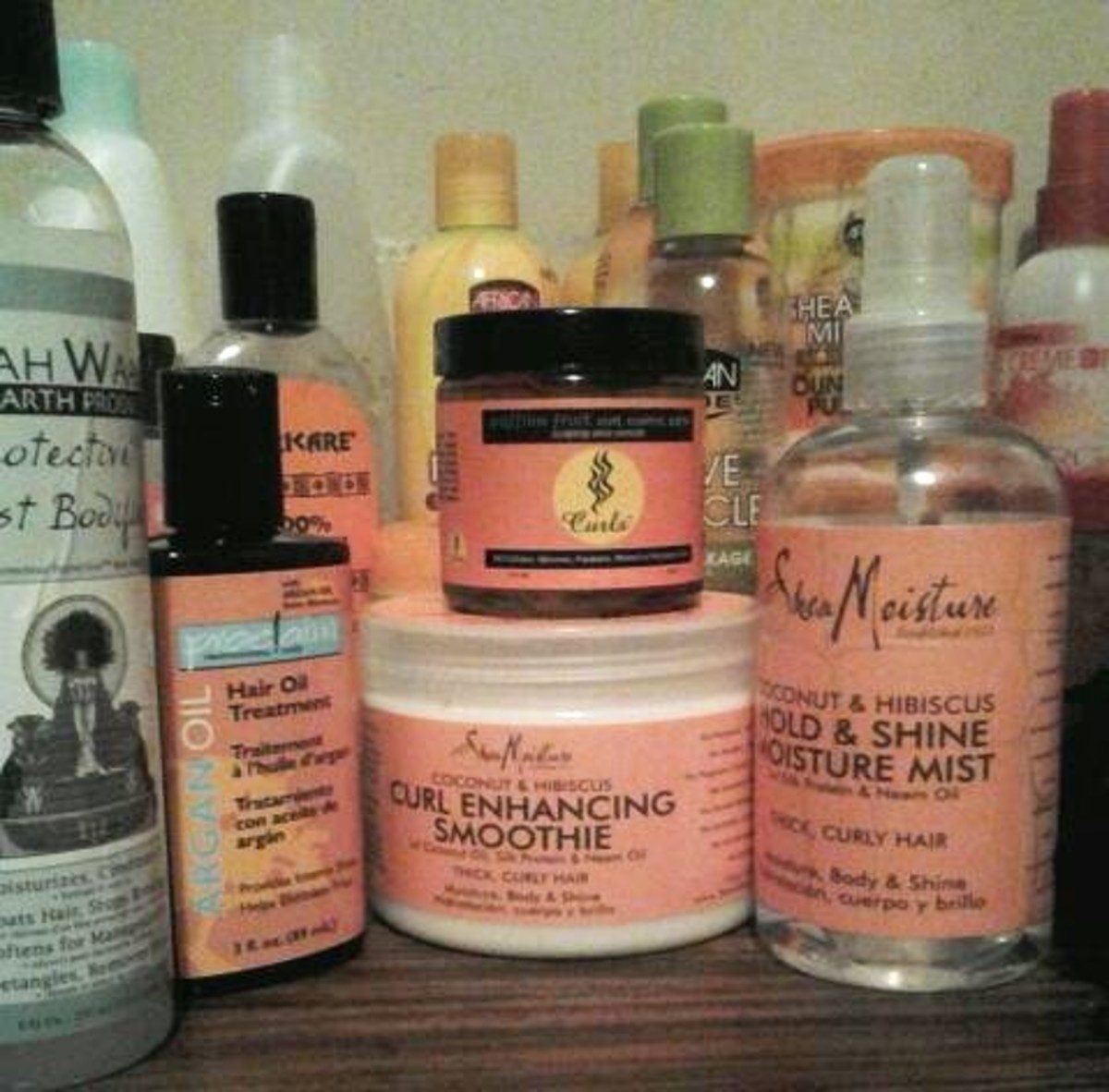
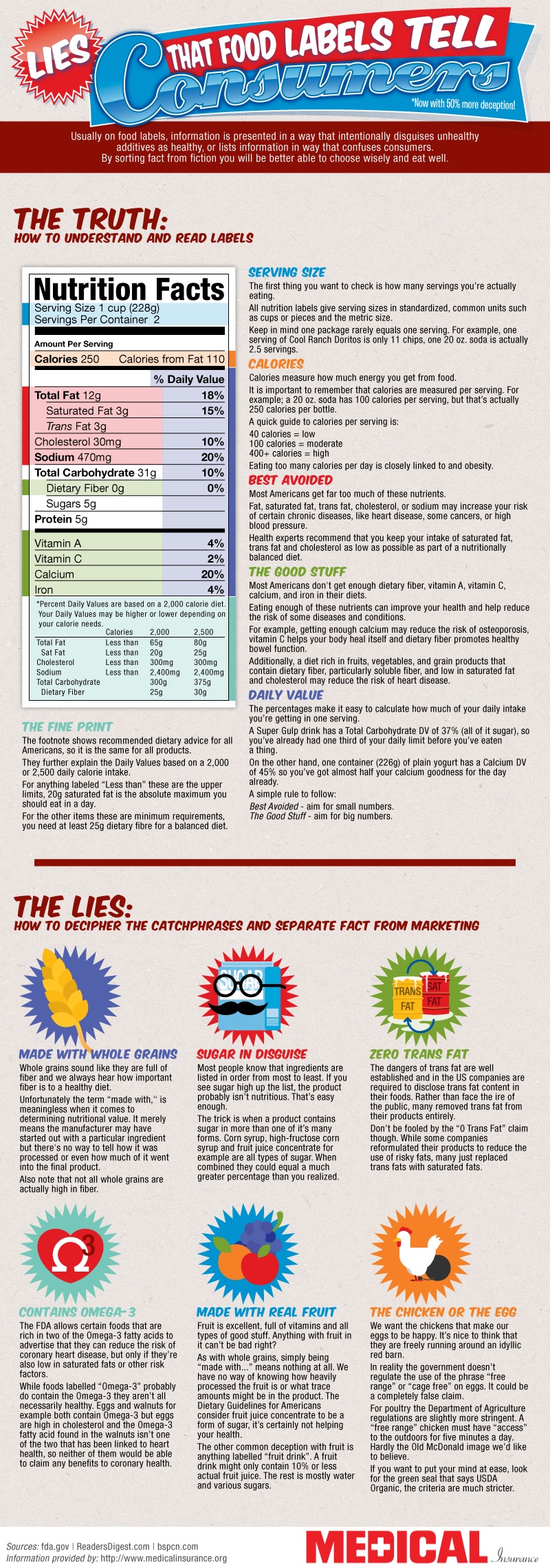


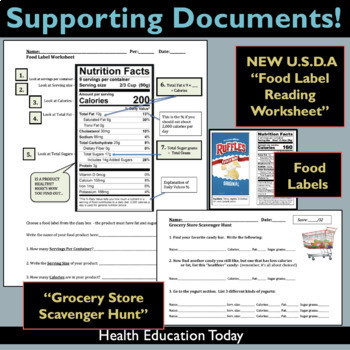


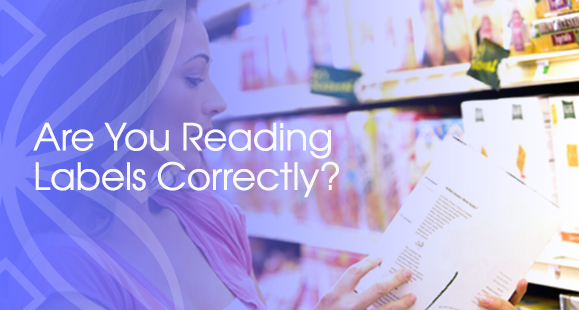

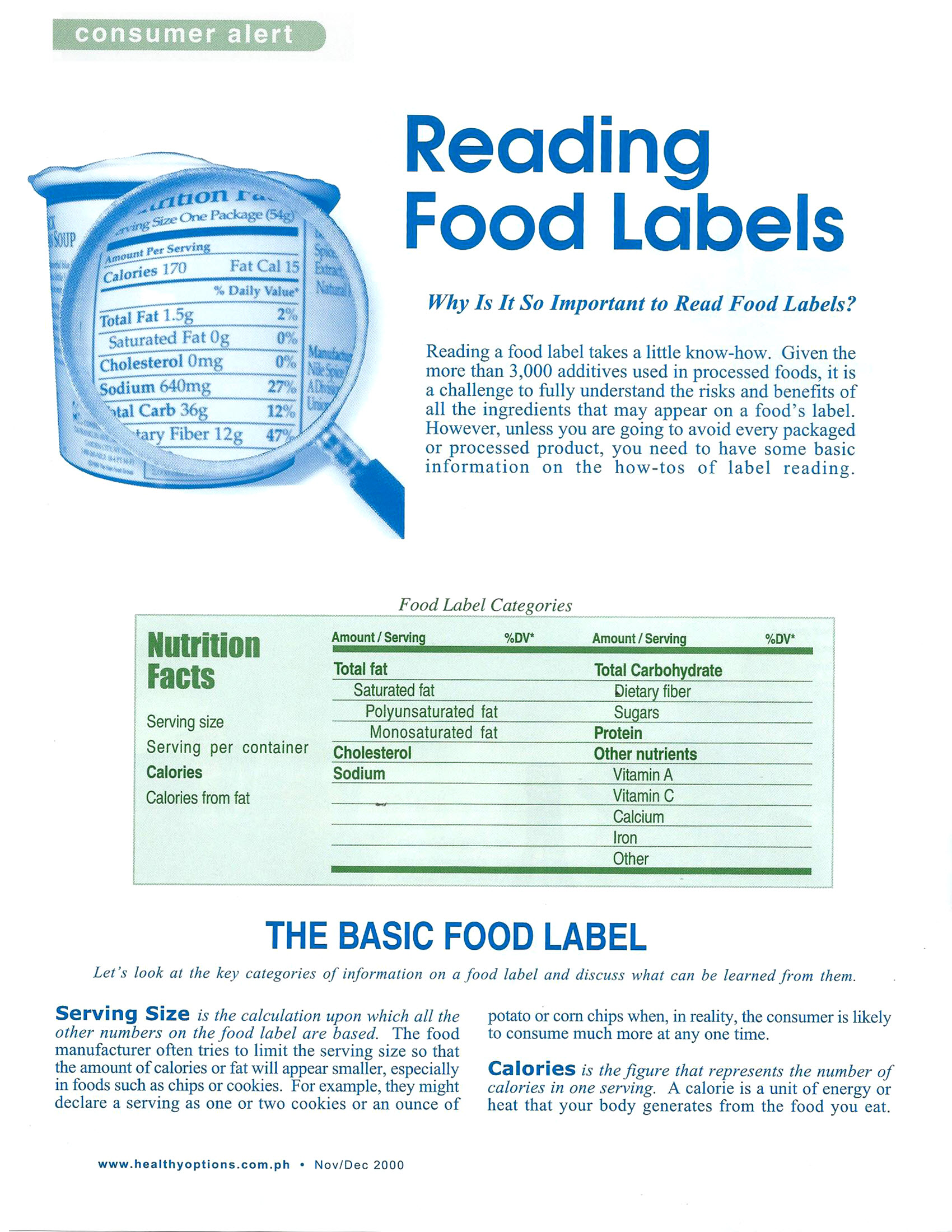
Post a Comment for "38 reading and understanding food labels"